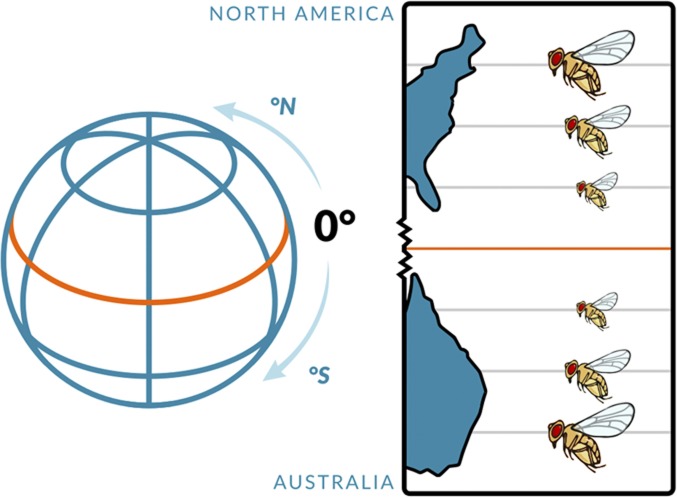Figure 4.
Latitudinal life-history clines in D. melanogaster. On multiple continents and subcontinents, spanning temperate to subtropical/tropical regions, fly populations exhibit major differences in fitness components across latitudes. For example, in the northern hemisphere there exists a well-established latitudinal cline for body size along the North American east coast, with flies being larger in temperate populations (e.g., Maine) but smaller in subtropical/tropical areas (e.g., Florida). This pattern is matched, in an upside-down manner, in the southern hemisphere, for example along the Australian east coast. Such parallel clines exist for several fitness-related traits and imply that these clines are (at least partly) shaped by spatially varying selection. For example, high-latitude flies are typically not only larger but also less fecund, more stress-resistant, and longer-lived than flies from subtropical/tropical locales. See main text for further details; also see Figure 6. Figure credit: Chloé Schmidt (University of Manitoba).

